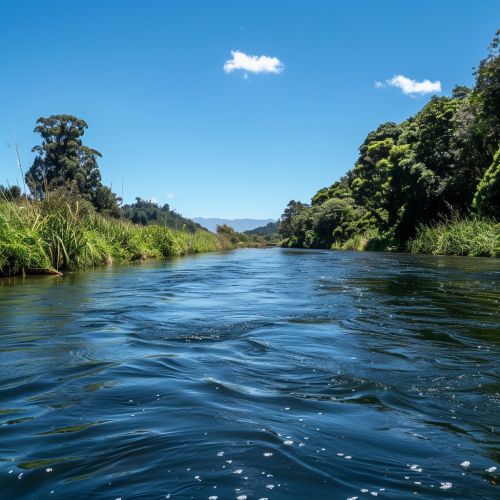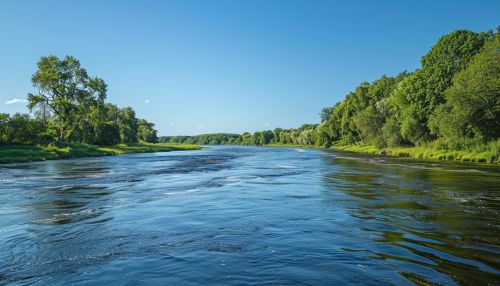River Severn
Geography
The River Severn, also known as Afon Hafren in Welsh, is the longest river in the United Kingdom, stretching approximately 220 miles from its source in the Cambrian Mountains of mid Wales to its estuary into the Atlantic Ocean near Bristol. The river flows through several counties, including Powys, Shropshire, Worcestershire, and Gloucestershire, and is notable for its large tidal range and the phenomenon of the Severn Bore.


Source and Course
The source of the River Severn is located at an elevation of 610 meters on Plynlimon, the highest point of the Cambrian Mountains. From its source, the river flows southeast through Llanidloes and Newtown, and then turns northeast to flow through Welshpool, Shrewsbury, and Ironbridge. After passing through the Ironbridge Gorge, a UNESCO World Heritage Site, the river continues south through Bridgnorth, Worcester, and Gloucester before reaching its estuary.
Tributaries
The River Severn has numerous tributaries, many of which are significant rivers in their own right. These include the River Teme, the River Avon, and the River Wye, the fifth-longest river in the UK. These tributaries contribute to the Severn's large catchment area, which at over 11,000 square kilometers is the largest in the UK.
Hydrology
The hydrology of the River Severn is complex and influenced by a variety of factors, including rainfall, geology, and human activity. The river has a mean flow rate of approximately 107 cubic meters per second, making it one of the most voluminous rivers in the UK. The Severn's large tidal range, second only to the Bay of Fundy in Canada, is a result of the funnel shape of the Bristol Channel and the Severn Estuary.
Severn Bore
One of the most notable features of the River Severn is the Severn Bore, a large surge wave that can be seen in the estuary. The bore is caused by the tide funneling into an increasingly narrow channel, causing a large wave to form. The Severn Bore is one of the largest in the world and attracts surfers and spectators from around the globe.
Ecology
The River Severn supports a diverse range of flora and fauna, including several species of fish such as salmon, brown trout, and grayling. The river's estuary is also an important habitat for wading birds and waterfowl, and is designated as a Ramsar site due to its international importance for bird conservation.
Human Use
The River Severn has been a vital transportation and trade route since prehistoric times, and has played a significant role in the economic development of the regions it flows through. Today, the river is used for a variety of purposes, including water supply, hydroelectric power generation, and recreation.
Conservation
Conservation efforts along the River Severn are focused on maintaining the river's water quality, protecting its biodiversity, and managing its flood risk. These efforts are coordinated by several organizations, including the Environment Agency, Natural England, and the Severn Rivers Trust.
